Filters: Tags: Queens County (X)
60 results (19ms)|
Filters
Contacts
(Less)
|
This data release contains coastal wetland synthesis products for the geographic region from Jamaica Bay to western Great South Bay, located in southeastern New York State. Metrics for resiliency, including unvegetated to vegetated ratio (UVVR), marsh elevation, and mean tidal range, are calculated for smaller units delineated from a Digital Elevation Model, providing the spatial variability of physical factors that influence wetland health. Through scientific efforts initiated with the Hurricane Sandy Science Plan, the U.S. Geological Survey has been expanding national assessment of coastal change hazards and forecast products to coastal wetlands with the intent of providing Federal, State, and local managers with...
Types: Map Service,
OGC WFS Layer,
OGC WMS Layer,
OGC WMS Service;
Tags: Atlantic Ocean,
Environmental Health,
Hydrology,
Jamaica Bay,
LTER,
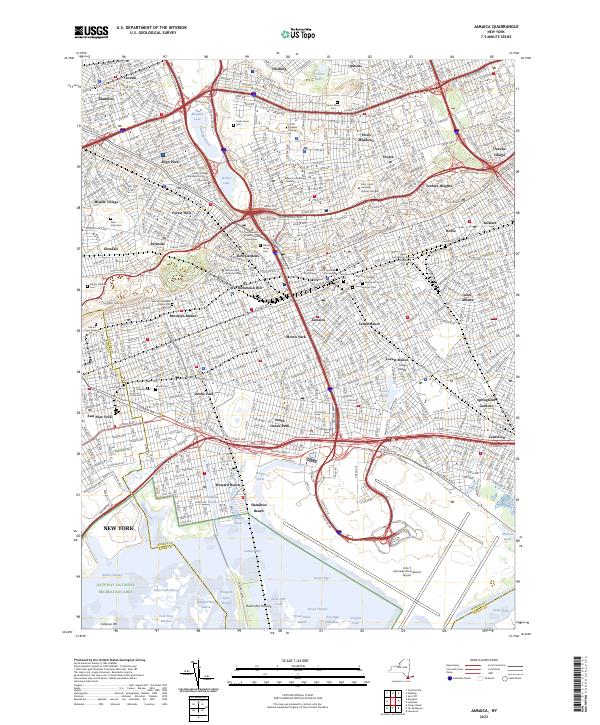
Layered geospatial PDF 7.5 Minute Quadrangle Map. Layers of geospatial data include orthoimagery, roads, grids, geographic names, elevation contours, hydrography, and other selected map features. This map is derived from GIS (geospatial information system) data. It represents a repackaging of GIS data in traditional map form, not creation of new information. The geospatial data in this map are from selected National Map data holdings and other government sources.
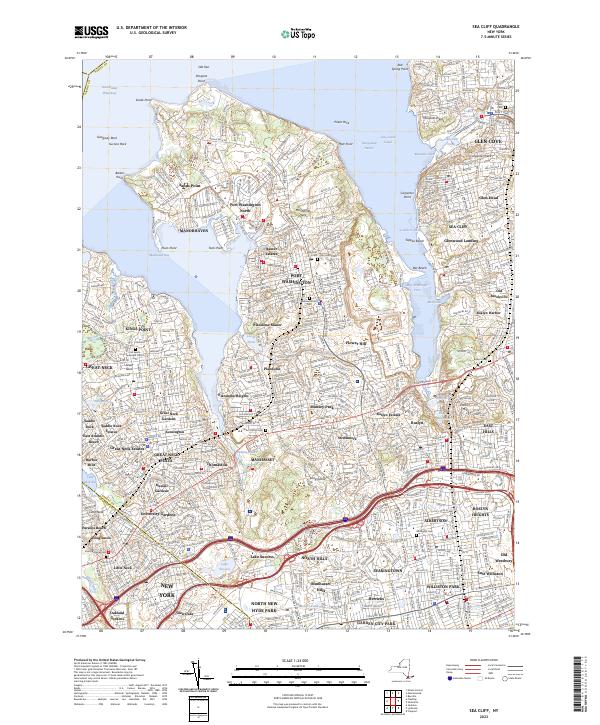
Layered geospatial PDF 7.5 Minute Quadrangle Map. Layers of geospatial data include orthoimagery, roads, grids, geographic names, elevation contours, hydrography, and other selected map features. This map is derived from GIS (geospatial information system) data. It represents a repackaging of GIS data in traditional map form, not creation of new information. The geospatial data in this map are from selected National Map data holdings and other government sources.
In cooperation with the New York City Department of Environmental Protection (NYC DEP), the U.S. Geological Survey (USGS) collected water and bed sediment samples along Alley Creek (Queens, New York) to help determine likely sources of fecal bacteria to the creek and Little Neck Bay. Potential terrestrial sources include stormwater, sewage via combined sewer overflow (CSO) and compromised infrastructure, bed-sediment resuspension, and groundwater discharge. Host sources that were targeted using microbial source tracking (MST) techniques included human, canine, waterfowl, and general Bacteroides. Routine water samples were collected and analyzed for the fecal indicator bacteria enterococci and fecal coliform, along...
Categories: Data;
Tags: Alley Creek,
Contaminants, Microbial,
Ecological Assessment of Human and Natural Impacts,
Hydrology,
New York,
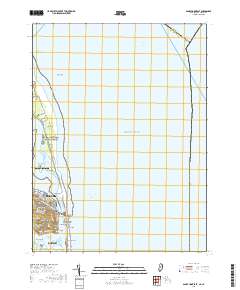
Layered geospatial PDF 7.5 Minute Quadrangle Map. Layers of geospatial data include orthoimagery, roads, grids, geographic names, elevation contours, hydrography, and other selected map features. This map is derived from GIS (geospatial information system) data. It represents a repackaging of GIS data in traditional map form, not creation of new information. The geospatial data in this map are from selected National Map data holdings and other government sources.
State and local county health departments have detected per- and polyfluoroalkyl substances (PFAS) in groundwater downgradient of airports and military and firefighting training areas in Long Island, New York. However, the occurrence and spatial distribution of PFAS throughout the surficial aquifer is not well established. Shallow groundwater samples were collected in 2018 from two observation well networks; the Sentinel network and Wastewater Treatment Plant groundwater (WTPGW) network. The Sentinel network is an island-wide group of wells screened within the shallow upper glacial (surficial, <100 feet deep) aquifer, which were sampled to assess the occurrence of PFAS in different land-use settings. The WTPGW network...
Categories: Data;
Types: Downloadable,
Map Service,
OGC WFS Layer,
OGC WMS Layer,
Shapefile;
Tags: Contaminants, Emerging,
Geochemistry,
Groundwater-Quality Monitoring,
Hydrology,
Long Island,
This model archive makes available the Soil-Water-Balance (SWB) model (Westenbroek and others, 2010) and input data used to estimate the potential amount of annual groundwater recharge to the Long Island aquifer system from 1900 to 2019 as described in U.S. Geological Survey Scientific Investigations Report 2021-5143. Input data for two SWB simulations are included in the archive. The first simulation uses existing land-use/land-cover datasets to estimate changes in recharge with changing land use from 1900-2019 (referred to as the post-development simulation). The second simulation assumed a forested, undeveloped (pre-development simulation) condition across Long Island for the same period. The same soil coverages...
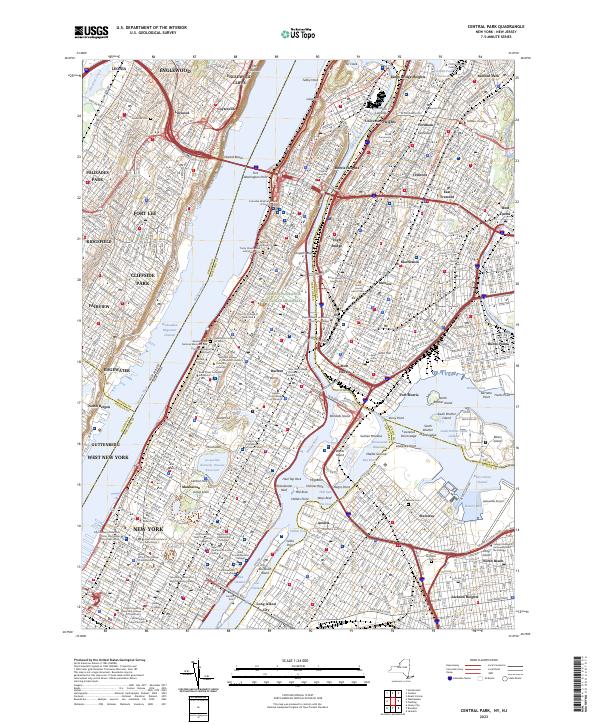
Layered geospatial PDF 7.5 Minute Quadrangle Map. Layers of geospatial data include orthoimagery, roads, grids, geographic names, elevation contours, hydrography, and other selected map features. This map is derived from GIS (geospatial information system) data. It represents a repackaging of GIS data in traditional map form, not creation of new information. The geospatial data in this map are from selected National Map data holdings and other government sources.
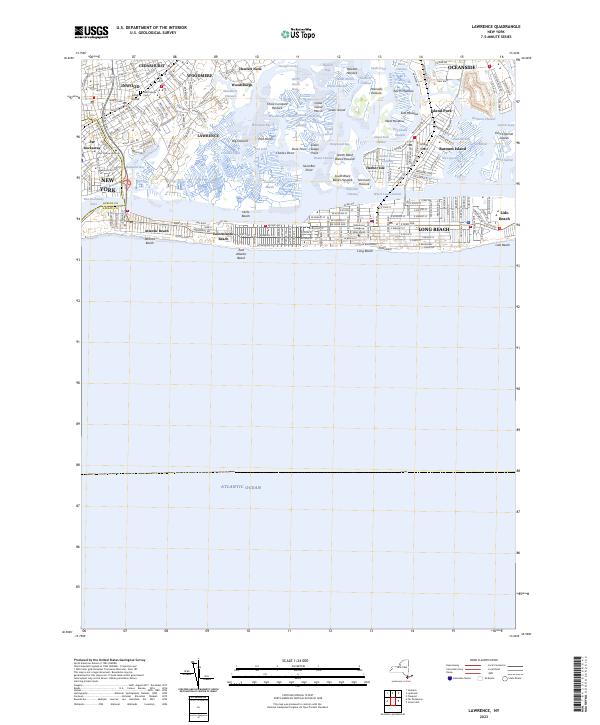
Layered geospatial PDF 7.5 Minute Quadrangle Map. Layers of geospatial data include orthoimagery, roads, grids, geographic names, elevation contours, hydrography, and other selected map features. This map is derived from GIS (geospatial information system) data. It represents a repackaging of GIS data in traditional map form, not creation of new information. The geospatial data in this map are from selected National Map data holdings and other government sources.
This data release contains model simulation results of a particle tracking analysis to delineate areas that provide recharge to surface waters and public-supply wells on Long Island, NY. The analysis partitions the recharge areas based on particle travel times of greater than or less than 10 years to reach the receiving surface water or well. The simulation was performed using a regional-scale numerical model of the Long Island aquifer system (Walter and others, 2020a and 2020b) for average 2005-2015 conditions. The model implements MODFLOW-NWT (Niswonger and others, 2011) to represent steady-state groundwater pumping and aquifer recharge conditions; recharge areas were identified and partitioned using the particle-tracking...

A previously developed three-dimensional steady-state groundwater flow model (https://doi.org/10.3133/sir20205091) is used to assist resource managers and planners in developing informed strategies to address nitrogen loading to coastal water bodies of Long Island, New York. Coastal water bodies of Long Island are important economic and recreational resources for the region. Therefore, the U.S. Geological Survey and New York State Department of Environmental Conservation initiated a program to delineate a comprehensive dataset of CAs (or areas contributing groundwater), travel times, and groundwater discharges to streams, lakes, marine-surface waters, and subsea discharge boundaries. The 25-layer regional groundwater-flow...
This data release contains coastal wetland synthesis products for the geographic region of Hudson Valley and New York City, New York. Metrics for resiliency, including unvegetated to vegetated ratio (UVVR), marsh elevation, and mean tidal range, are calculated for smaller units delineated from a Digital Elevation Model, providing the spatial variability of physical factors that influence wetland health. Through scientific efforts initiated with the Hurricane Sandy Science Plan, the U.S. Geological Survey has been expanding national assessment of coastal change hazards and forecast products to coastal wetlands with the intent of providing Federal, State, and local managers with tools to estimate the vulnerability...
Categories: Data;
Types: Downloadable,
Map Service,
OGC WFS Layer,
OGC WMS Layer,
Shapefile;
Tags: Dutchess County,
Hudson River,
LTER,
Long-Term Ecological Research,
Lower Bay,
This data release contains coastal wetland synthesis products for the geographic region of Hudson Valley and New York City, New York. Metrics for resiliency, including unvegetated to vegetated ratio (UVVR), marsh elevation, and mean tidal range, are calculated for smaller units delineated from a Digital Elevation Model, providing the spatial variability of physical factors that influence wetland health. Through scientific efforts initiated with the Hurricane Sandy Science Plan, the U.S. Geological Survey has been expanding national assessment of coastal change hazards and forecast products to coastal wetlands with the intent of providing Federal, State, and local managers with tools to estimate the vulnerability...
Categories: Data;
Types: Downloadable,
Map Service,
OGC WFS Layer,
OGC WMS Layer,
Shapefile;
Tags: Dutchess County,
Hudson River,
LTER,
Long-Term Ecological Research,
Lower Bay,
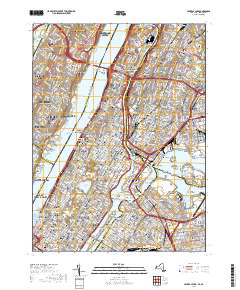
Layered geospatial PDF 7.5 Minute Quadrangle Map. Layers of geospatial data include orthoimagery, roads, grids, geographic names, elevation contours, hydrography, and other selected map features. This map is derived from GIS (geospatial information system) data. It represents a repackaging of GIS data in traditional map form, not creation of new information. The geospatial data in this map are from selected National Map data holdings and other government sources.
This data release contains coastal wetland synthesis products for the geographic region from Jamaica Bay to western Great South Bay, located in southeastern New York State. Metrics for resiliency, including unvegetated to vegetated ratio (UVVR), marsh elevation, and mean tidal range, are calculated for smaller units delineated from a Digital Elevation Model, providing the spatial variability of physical factors that influence wetland health. Through scientific efforts initiated with the Hurricane Sandy Science Plan, the U.S. Geological Survey has been expanding national assessment of coastal change hazards and forecast products to coastal wetlands with the intent of providing Federal, State, and local managers with...
Categories: Data;
Types: Downloadable,
Map Service,
OGC WFS Layer,
OGC WMS Layer,
Shapefile;
Tags: Atlantic Ocean,
Jamaica Bay,
LTER,
Long-Term Ecological Research,
Nassau County,
During October-November 2017 twelve time domain electromagnetic (TDEM) surveys were collected in Nassau and Queens County. The data were collected to estimate the extent of saltwater intrusion in support of the Long Island Groundwater Sustainability Project in cooperation with the New York State Department of Environmental Conservation. In the TDEM method, an electrical current is run through a wire in a transmitter loop, which in turn produces a magnetic field. The strength of the magnetic field is proportional to the strength of the electrical current. The current is rapidly shut off and due to Faraday’s Law, a secondary current is induced. The strength of the secondary current is proportional to the rate of...
This data release contains geospatial data defining estimates of the depth to water and water-table altitude in the upper glacial and Magothy Aquifers, the potentiometric surface of the confined Magothy and Jameco Aquifers, and the potentiometric surface of the Lloyd and North Shore Aquifers on Long Island, New York. Estimates are based on 502 water-level measurements made in wells across Long Island during March-April 2006. Water-table contours were interpolated using measurements from 341 wells screened in the upper glacial aquifer or shallow Magothy Aquifer. Potentiometric-surface contours in the confined Magothy and hydraulically connected Jameco Aquifer were interpolated using measurements from 102 wells. Potentiometric-surface...
This data release contains the input, output, and model code used to run a transient simulation of a previously published (Walter and others, 2020) steady-state regional model of Long Island, N.Y. The original model code was updated to MODFLOW 6 (version 6.3.0) and incorporates monthly transient stress periods to simulate conditions from 2005-2019 following methods described in Walter and others (2020). Selected remedial stresses (groundwater extraction and return) were incorporated for select locations in southeastern Nassau County. No modifications were made to the hydrologic boundaries, model layers, or hydraulic properties specified in the original model. A uniform value of 0.25 was used to represent specific...
This data release contains coastal wetland synthesis products for the geographic region of Hudson Valley and New York City, New York. Metrics for resiliency, including unvegetated to vegetated ratio (UVVR), marsh elevation, and mean tidal range, are calculated for smaller units delineated from a Digital Elevation Model, providing the spatial variability of physical factors that influence wetland health. Through scientific efforts initiated with the Hurricane Sandy Science Plan, the U.S. Geological Survey has been expanding national assessment of coastal change hazards and forecast products to coastal wetlands with the intent of providing Federal, State, and local managers with tools to estimate the vulnerability...
Categories: Data;
Types: Downloadable,
Map Service,
OGC WFS Layer,
OGC WMS Layer,
Shapefile;
Tags: Dutchess County,
Hudson River,
LTER,
Long-Term Ecological Research,
Lower Bay,
This data release contains coastal wetland synthesis products for the geographic region of Hudson Valley and New York City, New York. Metrics for resiliency, including unvegetated to vegetated ratio (UVVR), marsh elevation, mean tidal range, and shoreline change rate are calculated for smaller units delineated from a Digital Elevation Model, providing the spatial variability of physical factors that influence wetland health. Through scientific efforts initiated with the Hurricane Sandy Science Plan, the U.S. Geological Survey has been expanding national assessment of coastal change hazards and forecast products to coastal wetlands with the intent of providing Federal, State, and local managers with tools to estimate...
Categories: Data;
Types: Downloadable,
Map Service,
OGC WFS Layer,
OGC WMS Layer,
Shapefile;
Tags: Dutchess County,
Hudson River,
Lower Bay,
New York,
Putnam County,
|

|